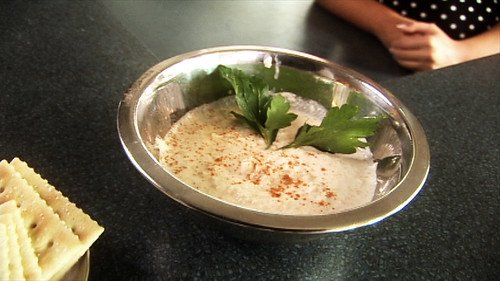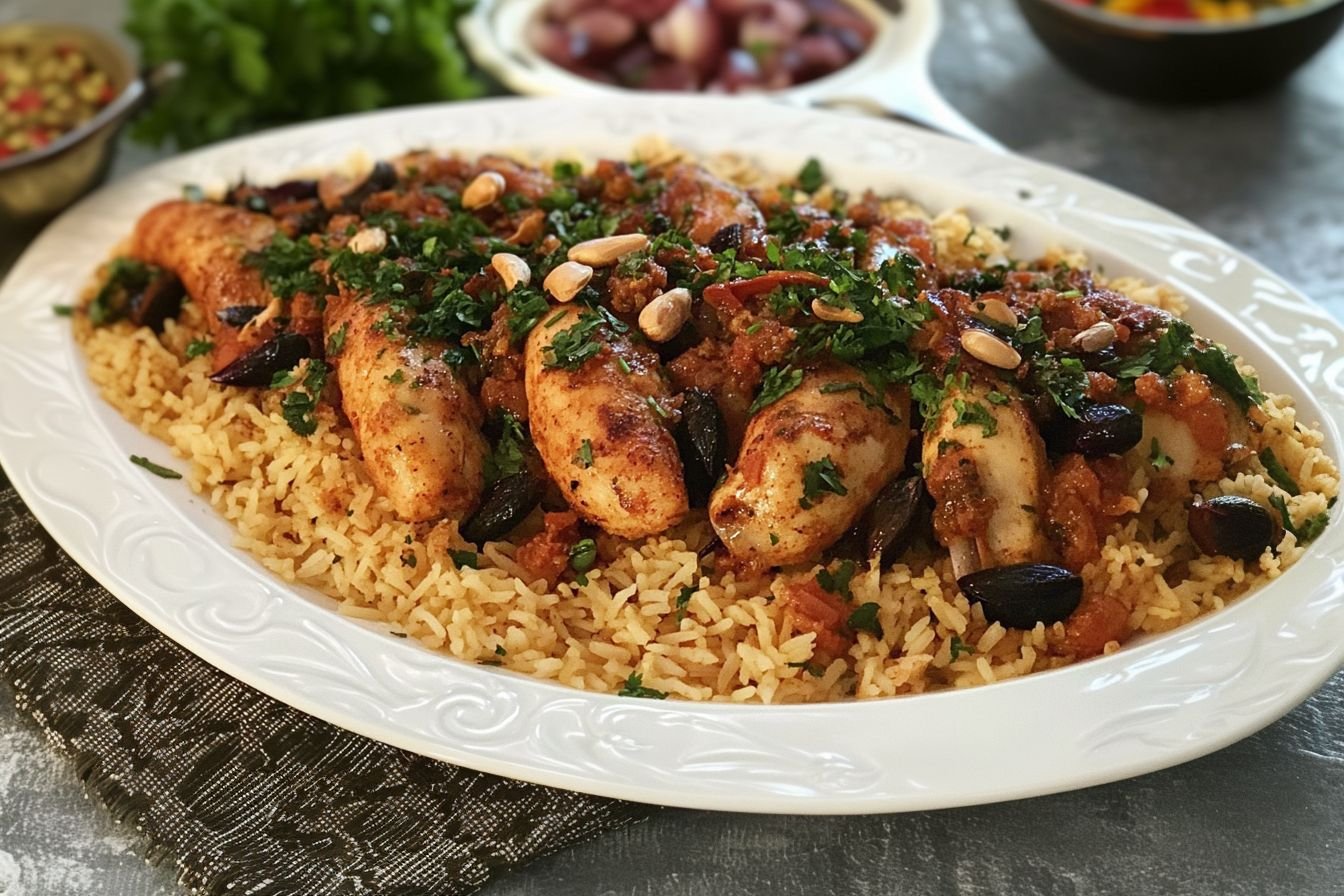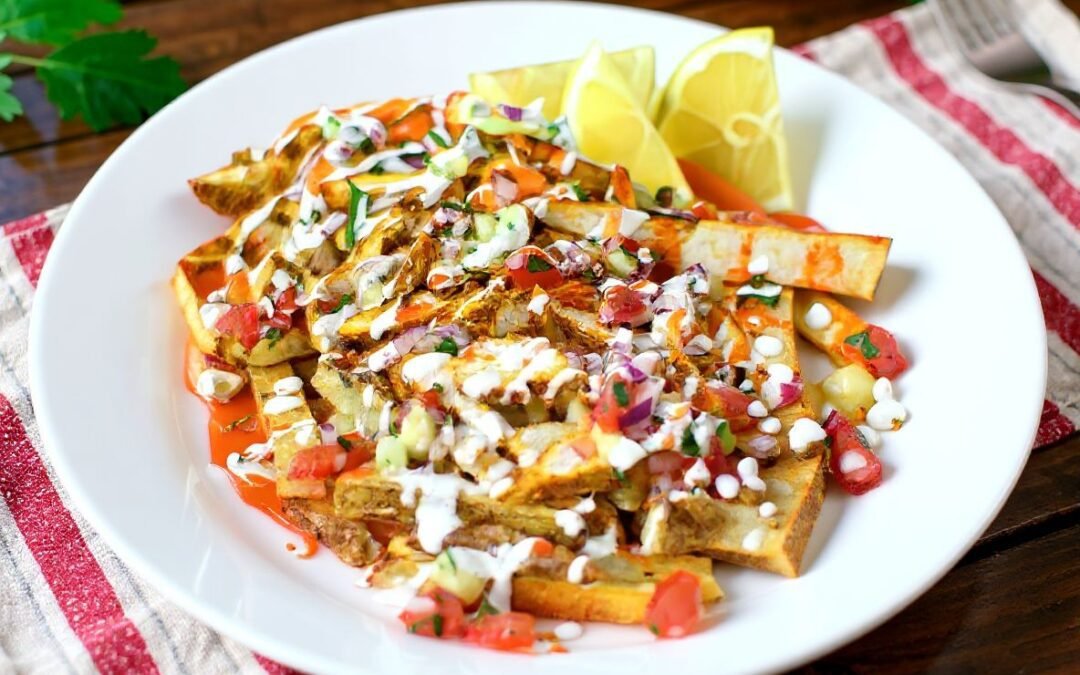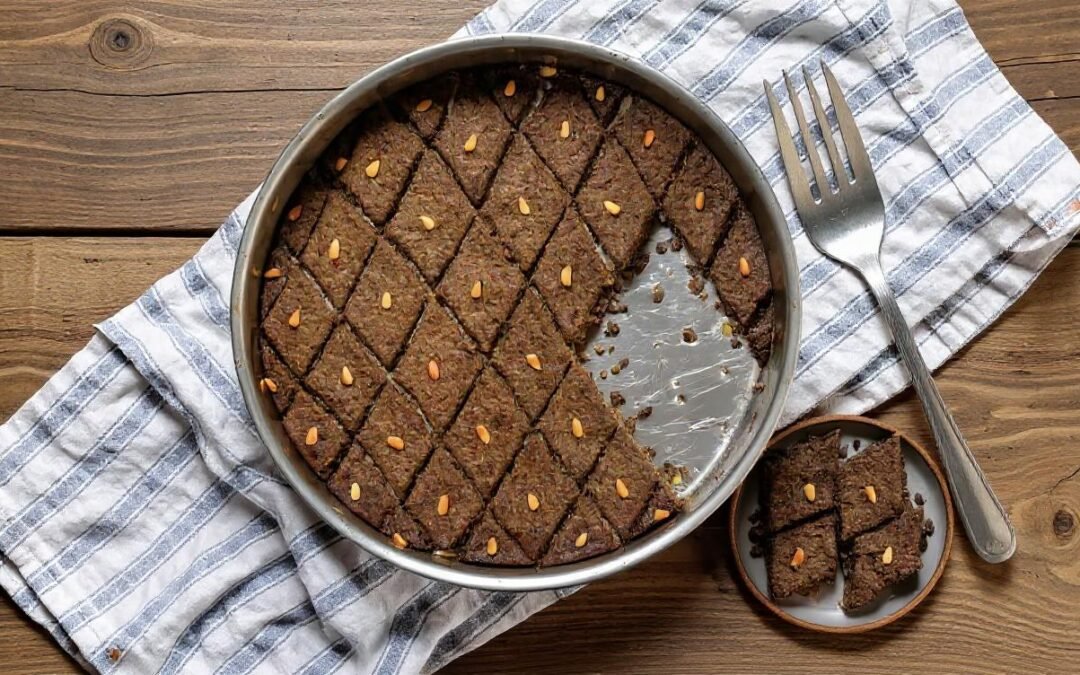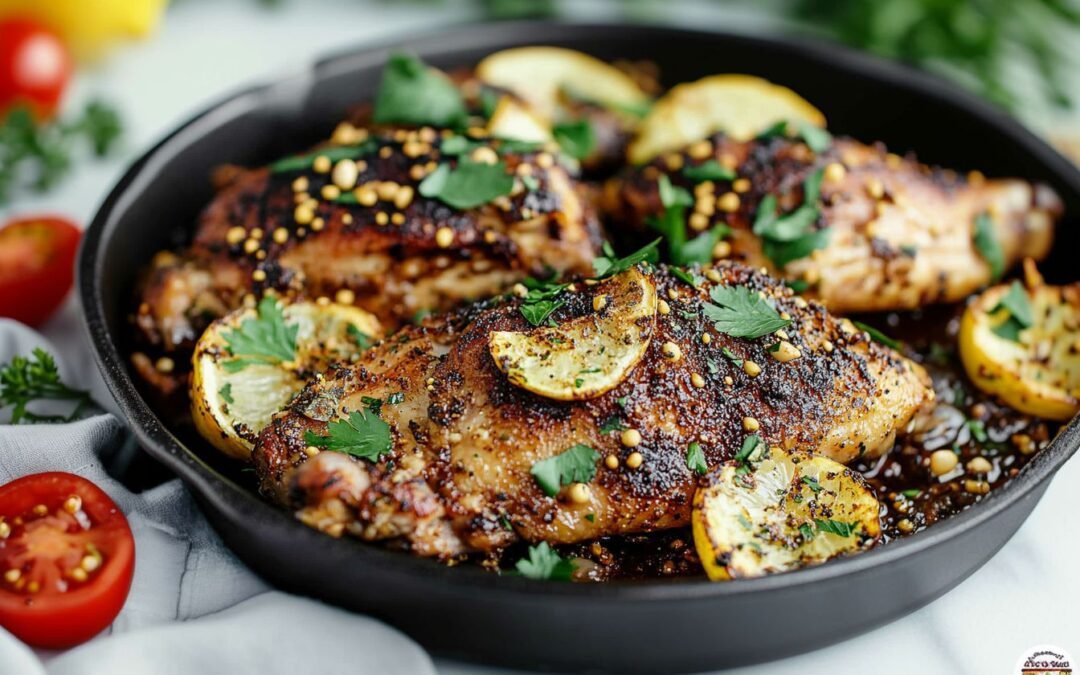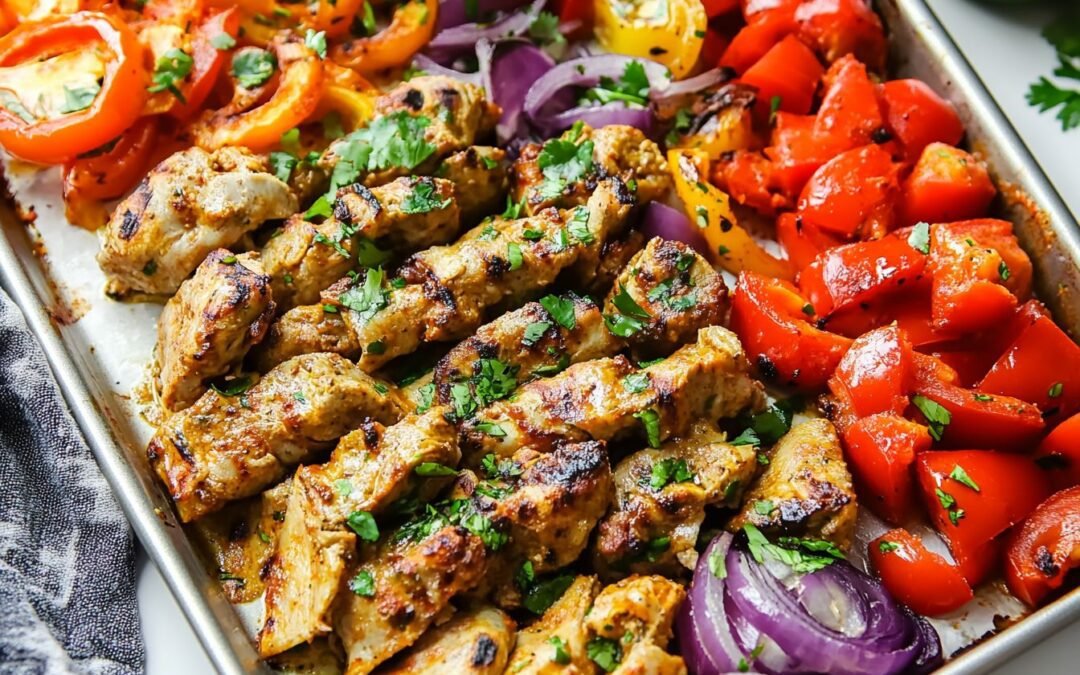If you’re looking for a delicious dish that brings warmth and comfort, Kabsa is a fantastic choice. This flavorful rice and chicken dish is beautifully spiced with saffron, cinnamon, cardamom, and allspice, making it perfect for gatherings or a cozy dinner at home. I love how it combines tender chicken, warm spices, and the sweetness of raisins and almonds, creating a delightful balance of flavors.
To make Kabsa, you’ll need ingredients like butter, onion, garlic, a whole chicken, tomatoes, carrots, and a variety of spices including nutmeg and cumin. The process results in a fragrant and hearty meal that is sure to impress anyone at your table. Once you try it, you might just find yourself making this dish a regular feature in your home cooking.
Exploring Kabsa
Kabsa is a beloved dish that hails from Saudi Arabia and other parts of the Middle East. It captures my taste buds with its rich flavors and fragrant spices.
The key ingredients typically include:
- Rice: Long-grain basmati is preferred.
- Meat: Chicken, lamb, or beef works beautifully.
- Spices: Commonly used spices are cumin, cardamom, and cinnamon.
I like kabsa for its vibrant presentation and hearty nature. The dish often features a colorful mix of vegetables, such as carrots and bell peppers.
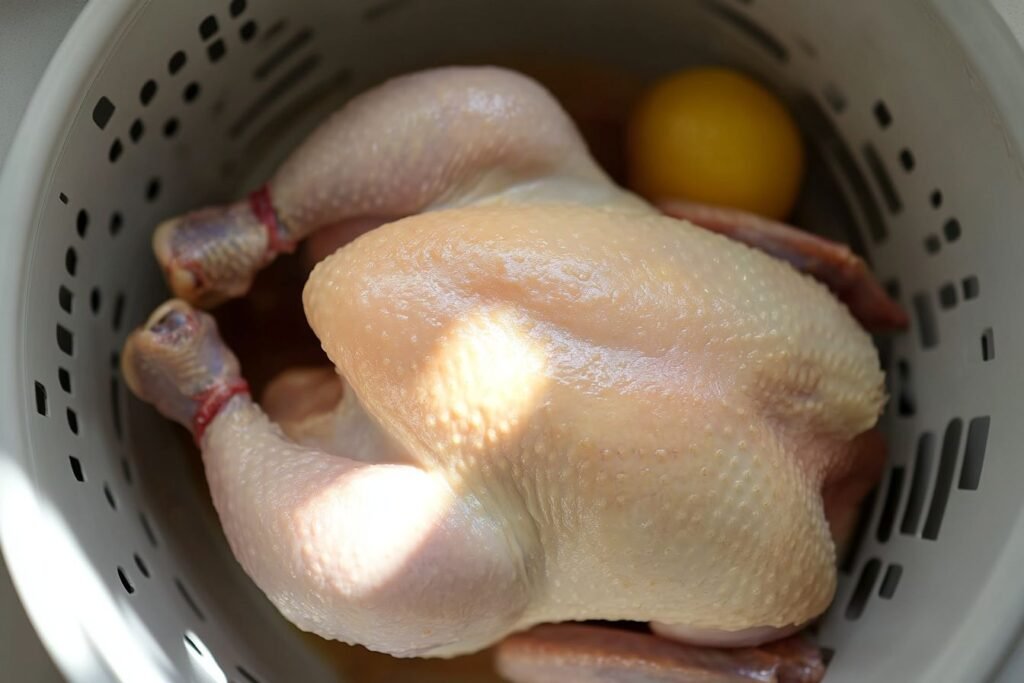
Ingredients
- ¼ cup of butter
- 1 finely chopped onion
- 6 minced cloves of garlic
- 1 whole chicken, cut into 8 pieces
- ¼ cup of tomato puree
- 1 (14.5 oz) can of diced tomatoes (do not drain)
- 3 peeled and grated carrots
- 2 whole cloves
- 1 pinch of ground nutmeg
- 1 pinch of ground cumin
- 1 pinch of ground coriander
- Salt and freshly ground black pepper to taste
- 3 ¼ cups of hot water (more as needed)
- 1 cube of chicken bouillon
- 2 ¼ cups of unrinsed basmati rice
- ¼ cup of raisins
- ¼ cup of toasted slivered almonds
The spice mix:
- ½ tsp of saffron
- ½ tsp of ground cinnamon
- ½ tsp of ground allspice
- ½ tsp of dried whole lime powder
- ¼ tsp of ground cardamom
- ¼ tsp of ground white pepper
How to make the kabsa dish recipe?
- Begin by crafting a nuanced spice blend, meticulously combining saffron, cinnamon, allspice, lime powder, cardamom, and white pepper in a small vessel. Reserve this aromatic mixture for later use.
- In a substantial pot set over medium heat, introduce melted butter. Sauté finely chopped onion and garlic until they achieve a soft, translucent quality, approximately five minutes. Subsequently, incorporate the chicken, searing it over medium-high heat, with intermittent stirring, until a light browning occurs, roughly ten minutes followed by stirring in tomato purée.
- Introduce canned tomatoes with their juice, along with carrots, cloves, nutmeg, cumin, coriander, salt, black pepper, and the previously prepared spice blend. Cook this amalgamation for approximately three minutes. Then, introduce water and a chicken bouillon cube.
- Bring the resulting sauce to a vigorous boil, then reduce the heat to a simmer, covering the pot. Allow the chicken to simmer until thoroughly cooked, around thirty minutes.
- Gently integrate the rice into the simmering mixture. Re-cover the pot and allow it to simmer until the rice achieves tenderness and nearly all liquid is absorbed, approximately twenty-five minutes. If necessary, introduce raisins and a small quantity of hot water. Continue to cook, covered, until the rice grains separate, an additional five to ten minutes.
- Transfer the prepared rice to a large serving platter. Arrange the cooked chicken atop the rice. For an enhanced textural element, garnish with toasted slivered almonds.
Nutritional Information
| Nutrient | Amount per Serving |
|---|---|
| Calories | 528 |
| Protein | 29 grams |
| Total Fat | 21 grams |
| Saturated Fat | 8 grams |
| Carbohydrates | 55 grams |
| Cholesterol | 88 mg |
| Dietary Fiber | 3 grams |
| Sugars | 7 grams |
| Sodium | 423 mg |
Serving Suggestions
Dish Presentation
For an eye-catching presentation, I prefer using a large, shallow platter. This allows the kabsa to be displayed beautifully. I like to mound the rice in the center, letting the aromatic spices rise visually.
I often garnish with fresh cilantro or parsley, as the green adds a pop of color. Slices of lemon or lime not only look appealing but also provide a zesty contrast when served.
Consider placing the chicken or meat pieces artfully atop the rice, making each serving visually enticing. I also occasionally sprinkle toasted almonds and pine nuts for texture and flavor.
Accompaniments and Sides
To complement kabsa, I recommend serving it with a variety of sides. One favorite is a refreshing cucumber and tomato salad, which balances the spices of the main dish.
I also like offering a side of yogurt or a tahini sauce. These creamy elements can cool down the palate and add a new dimension.
In my experience, serving warm pita bread alongside kabsa creates a lovely contrast. It’s perfect for scooping up the rice and meat.
Lastly, I sometimes include spiced pickles or olives, which add a tangy flavor, enhancing the meal’s richness. These elements combine to create a well-rounded dining experience that everyone will appreciate.
Tips and Tricks for Perfect Kabsa
- Choose the Right Rice: I prefer using long-grain basmati rice. It cooks well and absorbs spices beautifully.
- Spice Blending: I always create my spice mix. A blend of saffron, cinnamon, cardamom, and more makes a big difference.
- Marinate the Meat: If I have time, I marinate the meat for a few hours or overnight. This adds depth to the flavor.
- Sautéing the Ingredients: I like to sauté the onions and spices together before adding the rice. This step brings out the flavors nicely.
- Water Ratio: I use a 1:2 rice-to-water ratio. This ensures the rice cooks perfectly without being too mushy.
- Resting Time: After cooking, I let the kabsa rest for about 10 minutes. This allows the flavors to meld together.
- Garnishing: I love adding toasted almonds or pine nuts on top. It adds a nice texture and flavor.
- Serve with Sides: I often serve kabsa with a side of salad or yogurt. This balances the spices and enhances the meal.
Storing and Reheating
Storing Kabsa
- Cool Down: Let the kabsa cool to room temperature before storing.
- Airtight Container: Place it in an airtight container to keep it fresh.
- Refrigerate: Store in the fridge for up to 3 days.
Freezing Kabsa
- Freezer-Friendly: I can freeze kabsa if I want to keep it longer.
- Labeling: I always label containers with the date for easy tracking.
- Storage Time: It can last for up to 3 months in the freezer.
Reheating Kabsa
- Thawing: For frozen kabsa, I thaw it in the fridge overnight.
- Microwave: I like using the microwave for quick reheating.
- Use a microwave-safe dish.
- Add a splash of water to keep it moist.
- Stovetop: Alternatively, I can reheat it on the stovetop.
- Heat with a little oil or water to prevent sticking.
- Stir occasionally to ensure even heating.
Conclusion
Preparing kabsa is a delightful experience that brings together rich flavors and aromatic spices. I loved every step of cooking this dish, from sautéing the onions to the finishing touches.
Here are some tips I’ve found helpful:
- Quality of rice: Use long-grain basmati for the best texture.
- Spices: Freshly ground spices enhance the overall flavor profile.
- Protein choice: Chicken, lamb, or shrimp works wonderfully, depending on what I have on hand.
Serving kabsa is also a joy. I like to pair it with a simple salad or a refreshing yogurt sauce.
Your friends and family will appreciate the effort, and I think it will quickly become a favorite in your home. Enjoy the process and the wonderful taste of kabsa!
As you’ve read above, tahini sauce is great to have with this dish.
Get this easy tahini recipe now (by clicking the image below):
